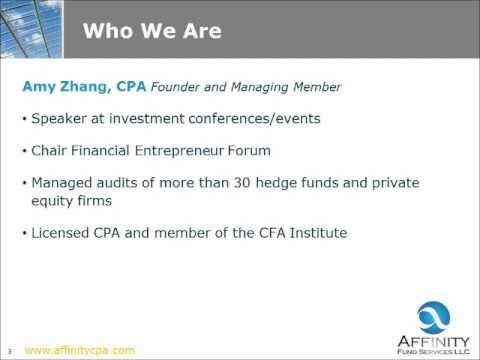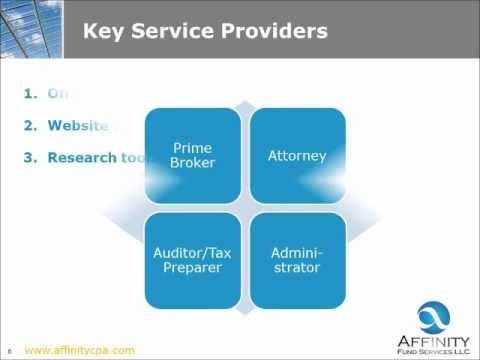How to Start a Hedge Fund Part 1 Hedge Fund Launch! The Premier Community for Start Up and Emerging
Post on: 3 Апрель, 2015 No Comment

July 23, 2007 |
If you’re new here, you may want to subscribe to my RSS feed. Thanks for visiting!
This is the first installment in a four part Q&A on “How to Start a Hedge Fund” with Jeffrey F. Kuchta, CFA, Managing Member of Hedge Fund Launch LLC
HFL. I want to start a hedge fund. Where do I start?
Kuchta. Before seriously starting the process you need to ask yourself: Do I have the experience, drive, patience, skill, integrity, network, support, and resources necessary to run my own hedge fund. It has historically been HFL’s credo that quick buck artists looking to jump on the hedge fund bandwagon need not apply. Managing other peoples’ money, for a sizable fee, should not be taken lightly.
If you can honestly answer the above affirmatively then the first place to start is to speak with a qualified attorney with experience in creating hedge fund entities and preparing the necessary documentation for a fund. The legal and regulatory landscape within the hedge fund industry is constantly shifting, has undergone seismic changes over the last few years, and is expected to become increasingly challenging. A qualified attorney can help you navigate the regulatory battle field and determine the optimal legal structure for your fund and asset management company.
In years past it may have been feasible to utilize a turn-key legal package for a few thousand dollars in order to establish the legal structure of a hedge fund. I think it is safe to say that this is no longer practicable. If you want it done right and above board, expect to spend in excess of $30,000 on up front legal costs. You get what you pay for, and the turn key packages generally leave quite a few holes.
HFL. After I consult with an attorney, what’s next?
Kuchta. Assuming you are comfortable with all of the up-front legal issues, you will need to start selecting your key service providers including an audit/accounting firm, administrator, prime brokers, executing brokers, software and data providers, and marketing agents. Again, you get what you pay for when it comes to your service providers. There are certainly budget options available, but beware of the potential downside of using third-tier service providers. Furthermore, it is hard to garner the confidence of investors when you do not employ a top notch support network.
HFL. With respect to legal structure, should I utilize an onshore fund or an offshore fund?
Kuchta. In the past the general answer to this for a start up manager was to determine where your seed capital is coming from (onshore or offshore) and then create the vehicle to fit that situation. What new managers often overlooked, however, is that there may be significant demand for their fund by the other category of investor at some point in the near future. Managers may deplete their legal budgets up front by only focusing on one domicile, and then when they see demand from the other domicile, they are not able to accommodate this demand. With that said, it is generally advisable to budget the expense up front for the creation of a master-feeder structure, wherein one master fund is created offshore as the sole trading vehicle, and then separate onshore and offshore entities can be formed to feed into that entity and accommodate both onshore and offshore investors. The upfront cost for this structure is certainly more expensive than creating one separate onshore or offshore vehicle, but is generally less than the cost of separately creating an onshore and offshore vehicle at two different points in time. Outside of the capital raising flexibility, the master-feeder structure has additional benefits including the elimination of the need for split trade tickets between onshore and offshore funds, consolidated risk management between funds, and minimal performance tracking error between funds.
It is important, of course, to consult with your attorney on the most favorable domicile and structure given your specific circumstances.
HFL. Exactly how much seed capital do I need to start an economically feasible hedge fund?
Kuchta. In order to secure a reputable prime broker and avoid burdening the fund with an outsized expense load, $5 million has generally been a bare minimum number that I have seen. $10 million to $25 million is an optimal figure, but realistically may not be obtainable for most. In the $5 million to $10 million range, you should be able secure high quality service providers, minimize the amortized expense load as a percentage of the total fund’s assets, and optimally employ your investment strategy (in most cases) and diversify your portfolio.
Again, I have often found that managers starting out with less than $5 million are generally utilizing third-tier service providers and are starting out with a sub-optimal portfolio that will certainly change in composition as fund assets grow. This is generally frowned upon by potential investors and may impede capital raising.
HFL. Should I utilize a 3c1 or 3c7 structure for my funds?
Kuchta. This really depends on the investor base that you are initially going after. 3c1 accreditation standards are more lenient for investors ($1 million of net worth or a previous 2 years compensation of $200,000 for each year). In this situation you will be able to attract more “mass affluent” type investors for smaller amounts of capital per investor, but will be bound by a 99 investor limit in the fund. These slots do tend to go quick when you are taking smaller amounts, but this is generally a more friendly class of investor for attracting assets when you are a new manager.
3c7 standards are stricter, requiring $5 million of net worth to invest. The number of slots available in the fund, however, is increased to 499. Due to the net worth requirement, this generally entails a more sophisticated and demanding group of investors who may have more stringent investment requirements and may not be amenable to investing in a start up.
It has generally been feasible for a start up manager to initially employ a 3c1 structure, and if the 99 slots become fully utilized, the manager can subsequently launch a 3c7 vehicle for qualified purchasers.
Again, we strongly advise working with your legal counsel to determine which structure is most suitable for you specific requirements. To be continued. In part two of this series we will discuss administrators and prime brokers.

5 Comments so far
- PARHUM on August 1, 2007 10:24 pm
do i need a series license to run a hedge fund?
No. From Wikipedia: In December 2004, the SEC issued a rule change that required most hedge fund advisers to register with the SEC by February 1, 2006, as investment advisers under the Investment Advisers Act.[9] The requirement, with minor exceptions, applied to firms managing in excess of US$25,000,000 with over 15 investors.
Kris Matthews on March 22, 2008 11:52 pm
In this article the author mentions a minimum of $5 million: does this correspond to the amount the manager needs to personally gather even before he/she seeks capital from outside investors? If so, how does one usually raise this?It seems like a lot to get from savings and friends. Thanks for your input.
As my partner Jeff states in the post, In the $5 million to $10 million range, you should be able secure high quality service providers, minimize the amortized expense load as a percentage of the total fund’s assets, and optimally employ your investment strategy (in most cases) and diversify your portfolio.
So, yes, you will need to aim high and try to attract at least 5 million in investment capital to really get your fund off the ground.
Also, if you are getting good results, word of mouth will play a big part of your effort to raise investment capital.
[] hedge fund is raising investment capital. Im hoping you have read our previous posts about how to start the hedge fund. Without a sound foundation for your business, it wont matter how much investment capital []














